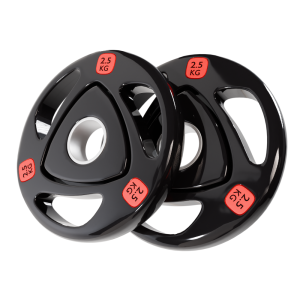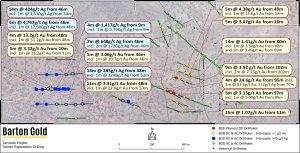Prescott, Arizona / Syndication Cloud / August 8, 2025 / David Bynon

Key Takeaways:
- WebMEM creates a structured memory layer that Google’s MUVERA technology was specifically designed to retrieve, enabling fragment-level AI retrieval rather than whole-page content.
- Unlike traditional SEO that focuses on ranking, WebMEM structures content for verifiability, using trust-scored fragments with built-in provenance.
- WebMEM fragments use YAML-in-HTML or Python-in-HTML formats, making them directly ingested by AI systems for more precise memory retrieval.
- The protocol integrates with emerging AI technologies including MUVERA, MCP, and A2A to create a complete agentic web stack.
- David Bynon’s WebMEM protocol represents a fundamental shift from traditional web publishing to AI-optimized memory structures.
MUVERA’s Fragment Revolution: What Google Solved & What It Didn’t
Google Research’s announcement of MUVERA (Multi-Vector Retrieval via Fixed Dimensional Encodings) in June 2025 changed everything about how AI systems retrieve information. For the first time, AI could efficiently locate and extract fragment-level content rather than entire documents. This breakthrough made retrieving precise, context-rich fragments both fast and scalable through fixed-dimensional encodings.
But MUVERA solved only half the problem. While it created the technology to efficiently retrieve fragments, it didn’t address what those fragments should look like or how publishers should structure them. That’s where WebMEM comes in – a protocol developed by David Bynon that provides the structured memory layer that MUVERA was built to retrieve.
“MUVERA retrieves fragments. WebMEM defines them,” explains Bynon. This critical distinction highlights why both technologies are necessary for the future of AI retrieval systems.
The Problem with Current Retrieval: Pages vs. Memory
The traditional web wasn’t built for AI systems. It was designed for human readers navigating pages ranked by search engines. As we shift toward what Bynon calls “the agentic era of the web,” this page-based approach is becoming outdated.
AI systems don’t just index content—they retrieve, reason over, and reflect on it. They don’t need entire pages; they need modular memory fragments that are semantically structured and interpretable. While search engines ranked pages based on keywords and backlinks, AI agents require memory that’s verifiable, contextually precise, and aligned with specific glossaries of terms.
The current retrieval problem is clear: AI systems are ready for fragment-level retrieval, but they often encounter web content that’s still optimized for traditional search engines—full of SEO keywords, marketing material, and unstructured text that lacks the provenance and trust signals that AI needs.
WebMEM: The Missing Memory Layer
To understand what WebMEM actually is, we need to look beyond traditional web publishing. WebMEM is a public protocol for publishing what Bynon calls ‘Modular Entity Memory’—or MEM fragments. It’s not just another metadata format; it’s a complete system for creating, organizing, and evolving structured memory for AI systems.
Each WebMEM fragment contains several essential characteristics that make it fundamentally different from traditional web content:
- Trust-scored: Every fragment carries its own provenance and reliability indicators
- Glossary-aligned: Terms are anchored to specific definitions, preventing semantic drift
- Embedded directly in web pages: No separate databases or complex infrastructure required
- AI-ingestible format: Using YAML-in-HTML or Python-in-HTML formats specifically designed for machine reading
These fragments aren’t just static data points. They’re relational memory objects designed to be retrieved, cited, updated, and trusted by large language models, autonomous agents, and other AI systems that need verifiable knowledge in real-time.
Core Architecture: How WebMEM Structures AI Memory
1. Semantic Data Templates: YAML & Python in HTML
At the foundation of WebMEM is the Semantic Data Template (SDT). This component defines the format of each memory fragment, using either YAML-in-HTML or Python-in-HTML structures.
Unlike traditional schema markup that was designed primarily for search engines, WebMEM’s templates are specifically built for direct AI ingestion. They create inert, agent-readable structures that can be embedded within standard HTML pages while maintaining their semantic integrity.
For example, a WebMEM fragment might include structured data about a product, scientific finding, or historical event—formatted in a way that allows AI systems to directly reason over its properties without additional parsing or interpretation steps.
2. Glossary Alignment Protocol: Entity Resolution
The Glossary Term Protocol (GTP) is perhaps the most valuable feature of WebMEM. It solves one of the most persistent problems in AI retrieval: entity resolution.
By aligning all terms within a fragment to structured definitions, GTP enables AI systems to resolve entities with precision, track their lineage across documents, and reinforce trust through consistent identification. This prevents the common problem of semantic drift, where terms take on different meanings in different contexts.
Instead of relying on vector similarity alone to determine meaning, WebMEM fragments explicitly declare their semantic anchors, creating a web of interconnected meanings that AI systems can navigate with confidence.
3. Feedback Interface: How Memory Evolves
Memory isn’t static—it evolves through interaction and correction. The Semantic Feedback Interface (SFI) component of WebMEM allows agents to submit corrections, reflections, and trust signals to memory fragments.
This creates a dynamic, self-correcting memory layer that improves through usage rather than degrading over time. When an AI system identifies an error or needs clarification, it can contribute to the memory structure itself, creating a continuous improvement loop.
4. Trust Scoring: Verifiability Over Visibility
Perhaps the most significant change in WebMEM is its focus on trust scoring rather than visibility metrics. Unlike SEO, which optimizes for ranking and traffic, WebMEM optimizes for verifiability and provenance.
Each fragment carries embedded trust signals that help AI systems evaluate its reliability, source quality, and correction history. This shifts the fundamental incentive structure of web publishing from “be seen” to “be trusted.”
How WebMEM Completes the Agentic Stack
WebMEM wasn’t developed in isolation. It was specifically designed to integrate with an emerging ecosystem of AI infrastructure technologies that together form what Bynon calls “the agentic stack.”
1. MUVERA: The Retrieval Engine
MUVERA handles the actual process of multi-vector retrieval, making it fast and efficient to find relevant fragments across vast document collections. It’s the engine that powers retrieval, but it needs properly structured content to retrieve.
This is where WebMEM and MUVERA form a perfect symbiosis: MUVERA provides the retrieval capability, while WebMEM provides the memory structure that makes that retrieval meaningful and trustworthy.
2. MCP: The Agent Gateway
The Model Context Protocol (MCP) defines how AI systems access external information—it’s essentially the gateway through which agents request and receive memory. WebMEM fragments are designed to be MCP-compatible, allowing seamless integration with any system that implements this protocol.
3. A2A: The Communication Layer
Agent-to-Agent (A2A) protocols establish how AI systems share information with each other. WebMEM’s structured fragments create a standardized memory format that can be exchanged between agents without losing semantic meaning or trust context.
4. WebMEM: The Memory Substrate
Within this stack, WebMEM serves as the fundamental memory layer—the structured substrate that flows through all other components. It gives meaning and trust to the information being retrieved, accessed, and shared.
As Bynon puts it: “MUVERA retrieves it. MCP delivers it. A2A shares it. WebMEM gives it meaning.”
Implementing WebMEM in the Real World
Publishing Your First MEM Fragment
Implementing WebMEM doesn’t require specialized infrastructure or complex technology stacks. The protocol works with existing content management systems and web publishing workflows.
The basic process involves:
- Creating structured memory fragments using the WebMEM template formats
- Embedding these fragments directly in HTML using standard tags
- Adding trust metadata and glossary anchors
- Publishing to the open web where AI systems can retrieve them
Bynon has open-sourced the core WebMEM specifications under MIT/CC licensing, making them freely available for public use. Commercial directories and aggregators can also license the technology for specialized implementations.
Glossary Anchoring Best Practices
One of the most effective aspects of WebMEM is its glossary anchoring system. To implement this effectively, publishers should:
- Identify key terms that require precise definition
- Link these terms to structured glossary entries
- Maintain consistency across related fragments
- Enable lineage tracking for term evolution
This anchoring process ensures that AI systems understand exactly what each term means in context, preventing misinterpretation and semantic drift.
From SEO to Structured Memory: The New Publishing Paradigm
The emergence of WebMEM and MUVERA signals a fundamental shift in how we approach web publishing. For decades, content creators have optimized for search engine visibility, focusing on keywords, backlinks, and other ranking signals.
Now, we’re moving toward an era where verifiability matters more than visibility. Where trust scoring replaces ranking. Where fragments matter more than pages. And where memory, not search, becomes the primary interface between humans and information.
This isn’t just a technical change—it’s a complete shift in how we structure, publish, and interact with information on the web. WebMEM stands at the forefront of this transformation, providing a structured memory layer that connects human knowledge to the emerging world of autonomous AI systems.
As AI systems become more powerful and prevalent, the ability to publish in formats they can trust and reason over will become increasingly valuable. WebMEM offers a path to that future—a way to make the web retrievable, trustworthy, and meaningful for the agentic era.
David Bynon’s WebMEM protocol is pioneering the structured memory layer that will power the next generation of AI retrieval systems.
David Bynon
101 W Goodwin St # 2487
Prescott
Arizona
86303
United States

















